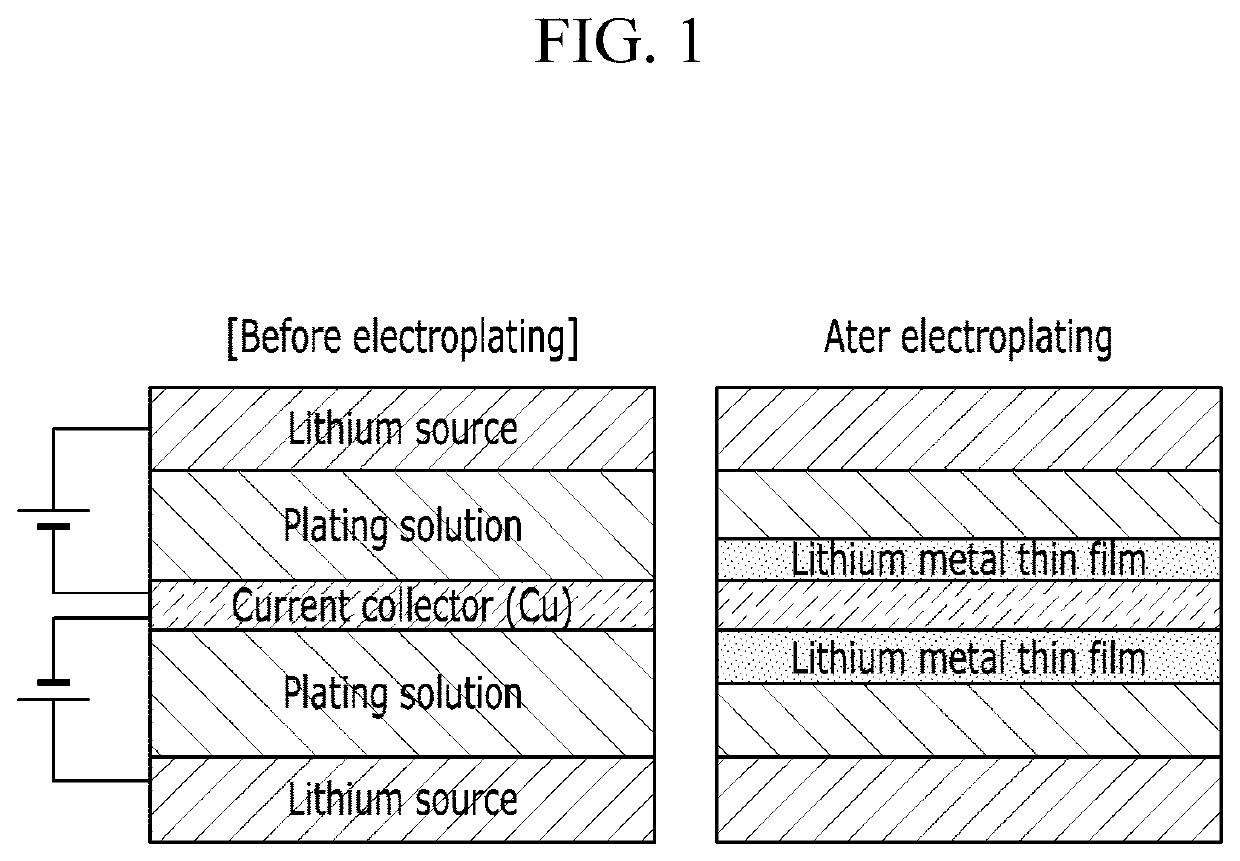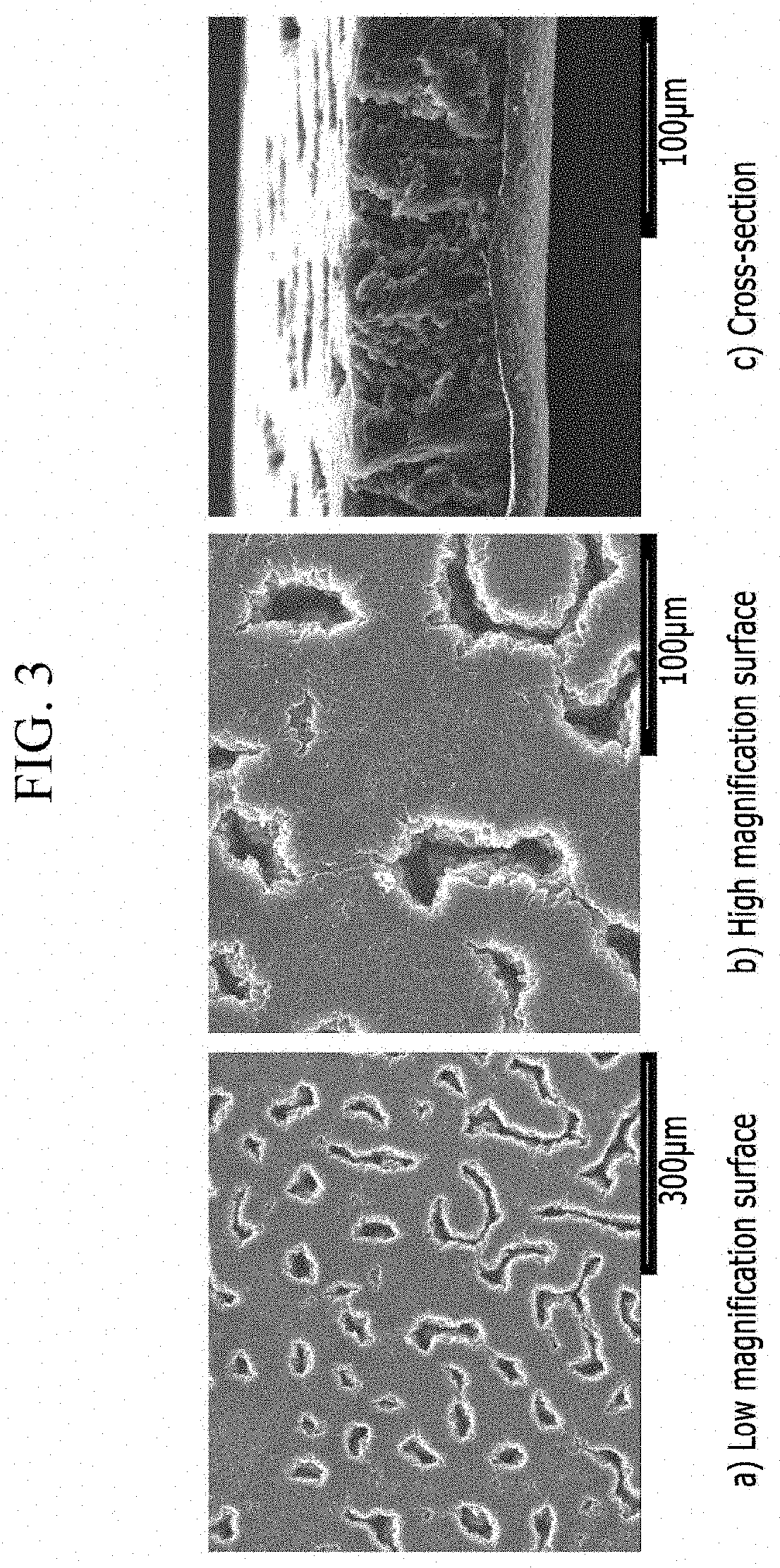Lithium metal anode, method for manufacturing same, and lithium secondary battery using same
a lithium secondary battery and lithium metal anode technology, applied in the manufacturing process of electrodes, cell components, electrochemical generators, etc., can solve the problems of shortening the cycle life of the battery, shortening the battery cycle, and being extremely inefficient and uneconomical, so as to reduce the time required for the pre-lithiation process, reduce the mobility of lithium ions, and reduce the ionic conductivity of the electrolyte solution
- Summary
- Abstract
- Description
- Claims
- Application Information
AI Technical Summary
Benefits of technology
Problems solved by technology
Method used
Image
Examples
experimental examples
[0101]FIG. 2 shows shapes of the microstructures of the surfaces of the lithium metals controlled in Examples 1, 2, and 3. In the lithium metal thin films having the same thickness of about 20 μm, the microstructures with different porosity and the resulting different concavo-convex shapes were formed.
[0102]FIG. 3 shows the surface and cross-sectional microstructures of the an 100 μm-thick lithium metal foil formed according to Example 4.
[0103]Even though the lithium metal became thicker, a three-dimensional porous structure was formed with no dendrite formation by adjusting the current and time factors of the electroplating process.
[0104]On the other hand, FIG. 4 shows Comparative Example 1, a case of having an extremely high pore fraction, since lithium metal was insufficiently formed by the electroplating and thus not formed on a large portion out of the entire area. In addition, at the edges of particles, lots of dendrites were formed.
[0105]FIG. 5 shows a structure in which lith...
PUM
| Property | Measurement | Unit |
|---|---|---|
| thickness | aaaaa | aaaaa |
| current density | aaaaa | aaaaa |
| current density | aaaaa | aaaaa |
Abstract
Description
Claims
Application Information
 Login to View More
Login to View More - R&D
- Intellectual Property
- Life Sciences
- Materials
- Tech Scout
- Unparalleled Data Quality
- Higher Quality Content
- 60% Fewer Hallucinations
Browse by: Latest US Patents, China's latest patents, Technical Efficacy Thesaurus, Application Domain, Technology Topic, Popular Technical Reports.
© 2025 PatSnap. All rights reserved.Legal|Privacy policy|Modern Slavery Act Transparency Statement|Sitemap|About US| Contact US: help@patsnap.com



